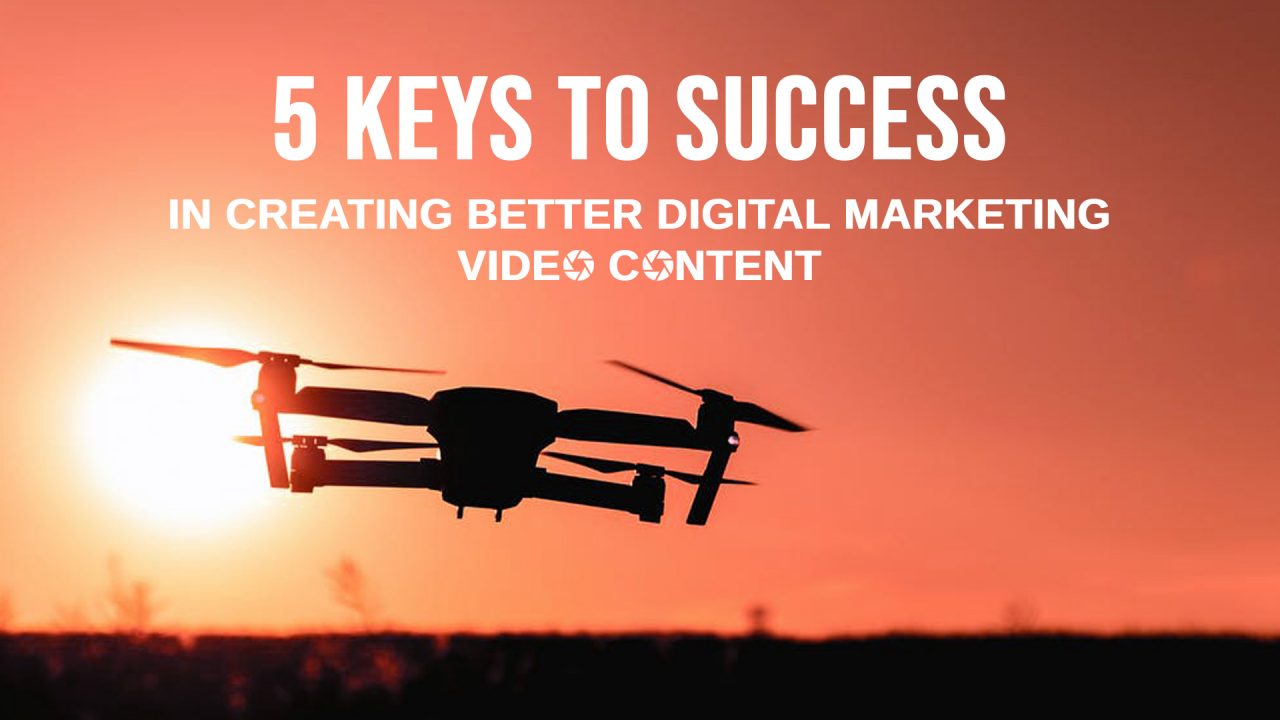The creation of professional digital marketing content is an extensive process. It’s not as easy as just showing up to an event or business with a professional camera and pressing the record button. This oftentimes ends up being a disaster for filmmakers and videographers alike. There are many pieces that go into creating a successful video project. Being able to showcase someone’s brand or company in a professional way is crucial.
It’s no secret that video marketing is essential in today’s media-filled world. With the amount of time people spend on their phones nowadays and it is imperative you set yourself up for success when creating these campaigns. These 5 tips of pre production planning will help you bring your digital marketing video content to the next level.
Rapport.
First and foremost – get to know your client. This may sound simple and rather obvious, but this is often one of the most overlooked steps in the video production process.
Schedule a time to sit down with whoever you are making a video for. Ask them as many questions as possible about their business and how you can best create a video to fit their needs. When it comes to video, the needs of your clients are often entirely different. One business may need monthly recurring videos for their social media account, while another may need a 10 minute documentary. It’s your job, as a creator, to help them figure out which type of project is going to facilitate their needs the most.
Ask questions about their business and what exactly their trying to achieve with the video you’ll be creating for them. Where will this video be hosted? How long of a video are they looking for? What sort of feel or vibe are they trying to portray? How big is their budget for production? What’s the overall message they’re trying to get across? These questions are all things that you need to have an understanding of before you can properly plan your project.
Storyboarding.
Once you have some good background information from your client, it’s time to think critically about the best storyline or concept for your client. This is the brainstorming stage. Not all of your ideas are going to be perfect, but physically getting some ideas down on paper or whiteboard will spark other ideas and get the creative juices flowing.
It’s important to note that people (viewers) often connect better with videos that affect them on an emotional level. People will always be more engaged with videos that they can relate to or connect with in an emotional way rather than some sort of “salesy” ad-based video. Steer clear of those.
Once you have a good idea of your vision you’ll want to present this to the client to ensure you guys are both on the same page. This can be done through pictures and drawings or writing. Try and bring some reference videos that have a similar feel, style or look that you’re trying to achieve. This will give your client a general understanding of what you’re planning to create for them.
Messaging.
Third- scripting. Some videos may have a voiceover, an interview segment, conversation between subjects, graphics on screen or not have any dialog at all. Regardless, this is where the overall message of your video is going to lie. It’s important you get this step solidified earlier rather than later.
Some of the most powerful dialogs are the ones that are short and broad. You don’t always want to throw a ton of information in your viewers face right away. Try and leave your view guessing and wondering – this will keep them engaged with the content and visuals that you are showing. Again, feed off emotion and things that people can relate with.
Location, Location, Location.
Fourth – Location Scouting. Woo! Time to get out of the office. Spend a day or few hours visiting the scene locations where you’ll be shooting. Make sure you bring a notebook and pencil with you as well. Walk around each location and note important things such as; outlets, windows, and shots/angles that will look good. Create diagrams for your lighting/audio set up per each scene. This will give you a good idea of where equipment will need to be placed and where people will be on set, that way when you go in to shoot, the set up process flows smoothly with minimal hiccups.
Shot-listing.
Five – Shot-listing. Now that you have your production planned and a good idea of direction for your project, you should spend some time diving more in depth on the exact list of shots that you want to achieve while you’re on set.
This step is essential with bigger productions when you have talent and crew members that are being paid hourly. You can’t afford to waste time trying to figure out what would look best or trying to shoot things different ways. Structure your shot-list around your location scout, think about what angles are going to be best to shoot from and what exactly you want our subject to be doing in each shot. If you don’t have a specific subject then lay out what types of shots you will be getting while your at the location.
Some things that are also important to note are lens focal length/aperture, shot size (close up, wide, etc), type of shot, movement of shot (stationary, panning, follow, etc) and what equipment you will need to get the look you’re going for.
No matter how big or small your production may be, these 5 steps of pre production planning are imperative to producing high quality digital marketing video content for your client. Some videos may require more time and planning than others but nevertheless it is all equally important. These steps may seem elementary but they are the foundation of every successful digital marketing video.
If you want to step up your video content and begin making a positive ROI from video marketing, then call us at ADventure Marketing. We are a full service digital marketing agency, specializing in video content creation that is lead generation focused.



